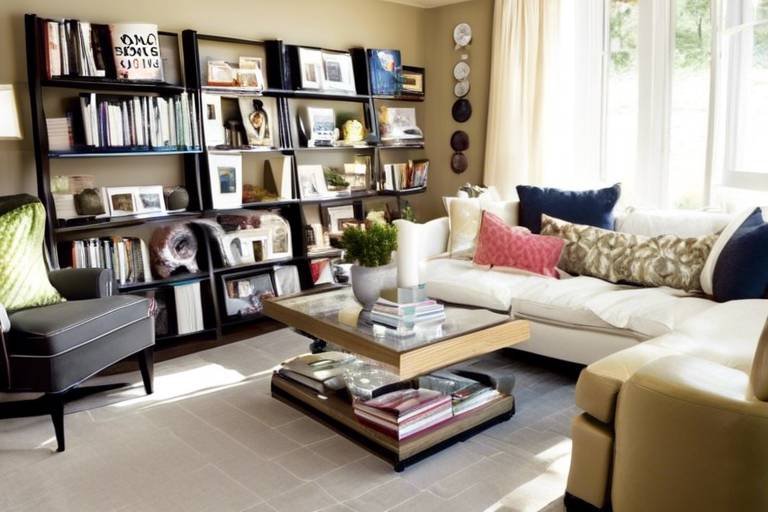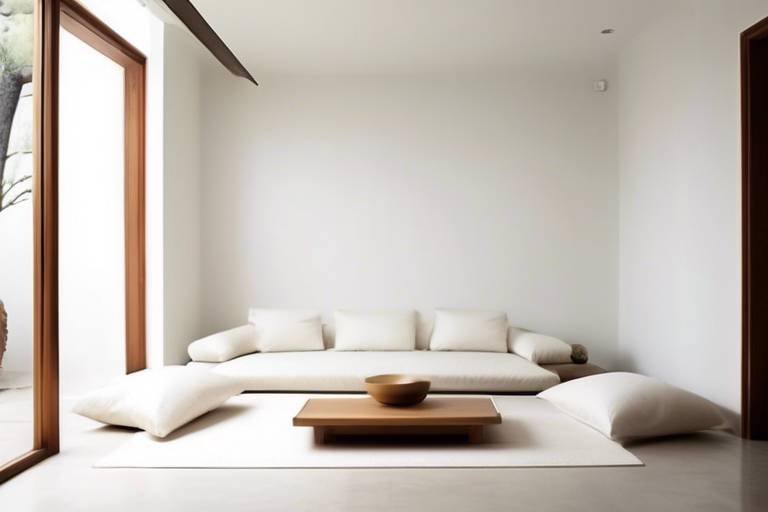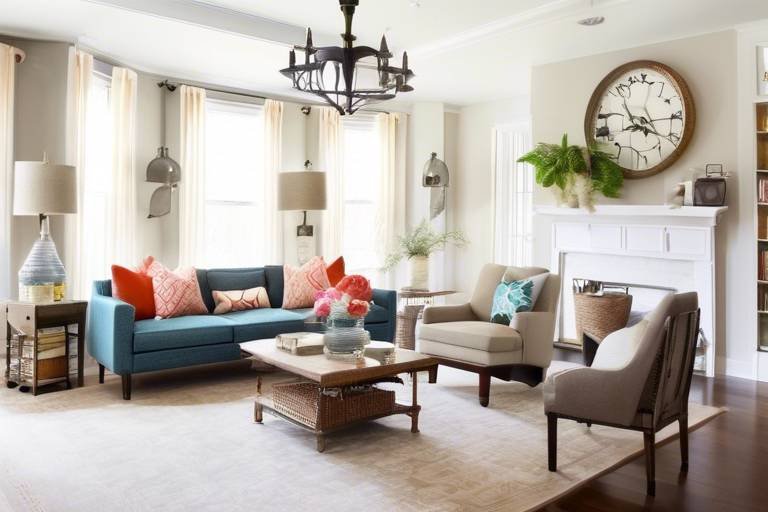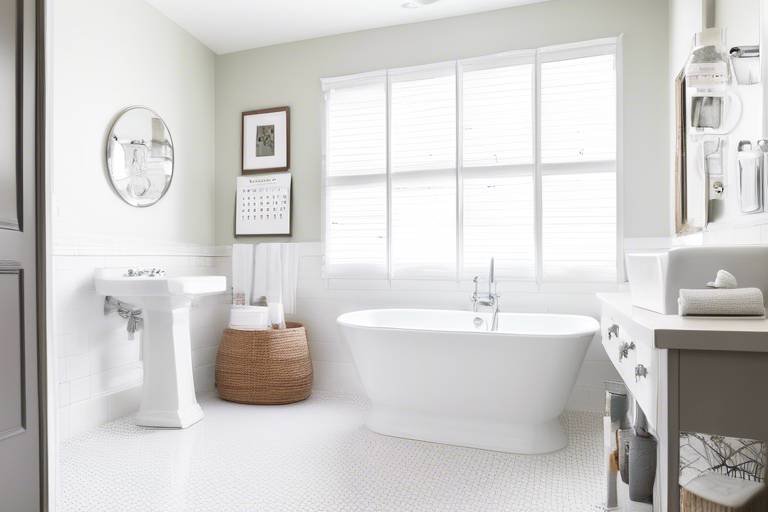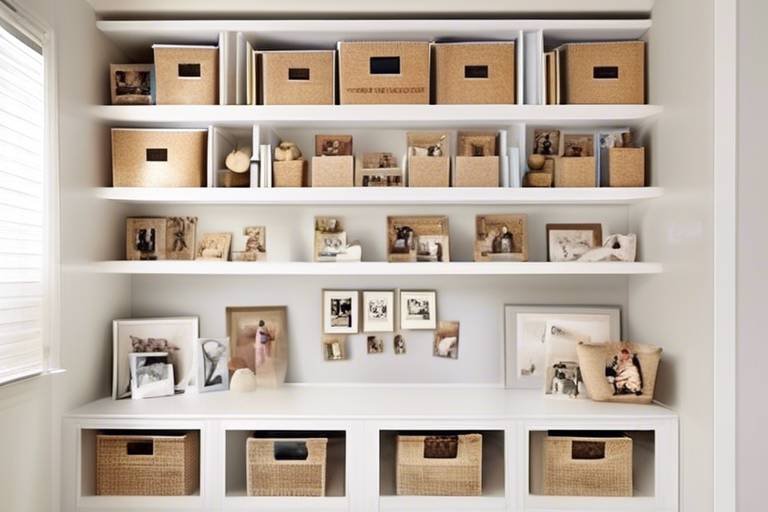Tips for Using Paint to Define and Separate Spaces
Paint can be a powerful tool in interior design for delineating different areas within a room. Here are some expert tips on how to effectively use paint to define and separate spaces in your home.

Choose the Right Colors
When it comes to using paint to define and separate spaces in your home, choosing the right colors is crucial. The colors you select can significantly impact the overall look and feel of each area while creating a cohesive design throughout the space. But how do you choose the perfect colors?
One approach is to opt for colors that complement each other while still providing a visual contrast between different zones. You can achieve this by selecting different shades of the same color for a harmonious look or by using contrasting colors to make a bold statement. Think about the atmosphere you want to create in each space and choose colors that align with that vision.
Additionally, consider the natural light in each area when choosing colors. Lighter hues can make a room feel more spacious and airy, while darker tones can add warmth and coziness to specific zones. How can you strike the right balance?
Experimenting with color samples on small sections of the walls can help you visualize how the colors will interact with the lighting in each space. This way, you can ensure that the chosen colors achieve the desired effect and enhance the overall ambiance of your home.

Use Paint to Create Focal Points
When it comes to interior design, utilizing paint to create focal points can truly transform a space. By strategically choosing specific areas to highlight with different colors or unique designs, you can draw attention to key features and effectively define the purpose of each space.
Imagine walking into a room where a vibrant accent wall immediately captures your gaze, leading you to focus on a stunning piece of artwork or a cozy reading nook. This intentional use of paint not only adds visual interest but also guides the eye towards areas you want to emphasize within the room.
One effective way to create a focal point is by painting a fireplace surround in a contrasting color, making it the centerpiece of the living room. This simple yet impactful technique can elevate the architectural elements of the space and enhance its overall aesthetic appeal.
Additionally, consider using paint to highlight architectural details such as crown molding or built-in shelving. By painting these elements in a different shade or finish, you can make them stand out and contribute to the overall design scheme of the room.
Experimenting with bold colors or intricate patterns on specific walls can also help define areas within an open-concept space. Whether it's a vibrant geometric design in a dining area or a serene mural in a relaxation corner, using paint to create focal points adds personality and character to your home.
Remember, the key is to strike a balance between cohesion and creativity. While each focal point should be distinctive, it should also harmonize with the overall color palette and design concept of the room. By thoughtfully incorporating paint to highlight focal points, you can elevate the style and functionality of your living spaces.

Employ Paint Techniques
When it comes to defining and separating spaces within a room, employing paint techniques can truly elevate the design to the next level. By experimenting with various methods, you can add depth, visual interest, and a sense of purpose to each area. Whether you opt for color blocking, stripes, or ombre effects, the possibilities are endless.
Imagine using color blocking to create a striking contrast between two zones, instantly drawing the eye and establishing a clear boundary without the need for physical barriers. Stripes, on the other hand, can elongate a wall or add a playful touch, guiding the flow of the space. And let's not forget about the mesmerizing ombre effect, where colors blend seamlessly to create a gradient that can evoke different moods in distinct areas.
By embracing these paint techniques, you have the opportunity to unleash your creativity and tailor each space to suit its intended function. Whether you're aiming to make a bold statement or achieve a subtle transition, the power of paint is truly transformative.

Utilize Accent Walls
When it comes to defining and separating spaces in your home, utilizing accent walls can be a game-changer. An accent wall is a single wall within a room that is painted a different color or adorned with a unique design, standing out from the rest of the space. This technique not only adds visual interest but also helps in delineating specific areas.
By strategically choosing which wall to highlight, you can create a focal point that naturally divides the room. Opt for a wall that draws the eye or aligns with the room's architecture to maximize the impact of the accent. Bold colors or patterns can be used to make a statement and set the tone for the space.
Accent walls are versatile and can be employed in various ways to define different zones within a room. Whether you want to separate a living area from a dining space or create a cozy reading nook, accent walls offer a simple yet effective solution. They can also be easily updated or changed to adapt to evolving design preferences.
When using accent walls, consider the overall color scheme of the room to ensure harmony and balance. The chosen accent color should complement the existing palette while adding a touch of personality and flair. Experiment with different textures, finishes, or wall treatments to enhance the visual impact of the accent wall.

Consider Architectural Elements
Paint can be a powerful tool in interior design for delineating different areas within a room. Here are some expert tips on how to effectively use paint to define and separate spaces in your home.
When looking to define and separate spaces within a room using paint, it's crucial to consider the existing architectural elements. These features, such as columns, archways, or alcoves, can serve as natural dividers between different areas. By enhancing these architectural details with paint, you can accentuate their presence and help visually define distinct zones within the room. For example, painting a column in a contrasting color can draw attention to it and create a clear separation between two spaces. Similarly, highlighting an archway with a different shade can emphasize the transition from one area to another. By incorporating paint strategically on these architectural elements, you can not only define spaces but also add character and depth to the room's design.

Use Paint to Create Illusions
When it comes to interior design, paint can work wonders in creating illusions that alter the perception of space. By strategically choosing colors and techniques, you can transform a room into a larger, cozier, or more defined area. Lighter hues have the magical ability to make a room feel more spacious and airy, perfect for opening up smaller spaces. On the other hand, darker tones can create a warm and intimate atmosphere, ideal for cozy corners or reading nooks.
Imagine walking into a room where the walls seem to expand endlessly, thanks to the clever use of light colors. It's like stepping into a serene oasis of tranquility, where every corner feels inviting and spacious. Conversely, picture a space cocooned in deep, rich tones that envelop you in a sense of comfort and intimacy, perfect for unwinding after a long day.
By using paint to create illusions, you can play with the dimensions of a room, making it feel larger or more intimate based on your preferences. It's like painting a canvas where the brushstrokes of color can transform the ordinary into the extraordinary, adding depth and character to your living spaces.

Define Spaces with Painted Borders
When it comes to defining spaces within a room using paint, one effective technique is to create painted borders. By strategically painting borders or lines on walls, ceilings, or floors, you can visually separate different areas without the need for physical barriers. This method not only adds a unique design element to your space but also helps in delineating zones.
Painted borders can be used to outline specific areas such as a dining nook, a reading corner, or a workspace within a larger room. By choosing contrasting colors or using different paint finishes, you can make these borders stand out and clearly define the boundaries of each space.
One creative way to utilize painted borders is to incorporate geometric designs or patterns along the edges of walls or ceilings. This can add a modern touch to your interior while effectively dividing the room into distinct sections. Additionally, painting borders around architectural features like windows or door frames can further enhance their presence and contribute to the overall design scheme.
Consider using painter's tape to achieve clean and precise lines when creating painted borders. This tool can help you maintain straight edges and ensure a professional finish to your design. Experiment with different thicknesses and colors of borders to find the perfect balance between separation and cohesion in your space.
Remember that painted borders can be a versatile and cost-effective way to define spaces in your home. Whether you prefer a subtle delineation or a bold statement, incorporating painted borders into your interior design can transform the look and feel of each area while adding a touch of creativity.

Experiment with Color Placement
Experimenting with color placement can truly transform the look and feel of your living spaces. Imagine your walls as a canvas where you can play with different hues to create unique effects. By strategically placing colors, you can either connect various areas seamlessly or create a clear distinction between them.
For instance, painting adjacent walls in different colors can establish a visual boundary between two spaces, giving each its own identity. On the other hand, using a gradient effect on walls transitioning from one color to another can blur the lines between rooms, making the overall space feel more cohesive.
Consider the impact of ceiling color as well. Painting ceilings in a lighter shade than the walls can make a room appear more expansive and open, while a darker ceiling can create a cozy atmosphere, especially in areas like a reading nook or dining corner.
Experimenting with color placement is like being an artist with a brush, creating depth and character within your home. Don't be afraid to try bold combinations or subtle transitions to see how they influence the perception of your living areas.
Frequently Asked Questions
- Can I use different shades of the same color to define spaces?
Absolutely! Using different shades of the same color can create a subtle yet effective distinction between areas while maintaining a cohesive look throughout your space.
- Is it necessary to paint entire walls to separate spaces?
No, you can use various paint techniques like color blocking, stripes, or accent walls to define zones without covering entire walls. This allows for flexibility and creativity in space delineation.
- How can I visually alter the perception of space with paint?
Strategic use of lighter colors can make a room feel more spacious, while darker hues can create a more intimate setting. Experimenting with color placement and techniques can help achieve the desired visual effect.















